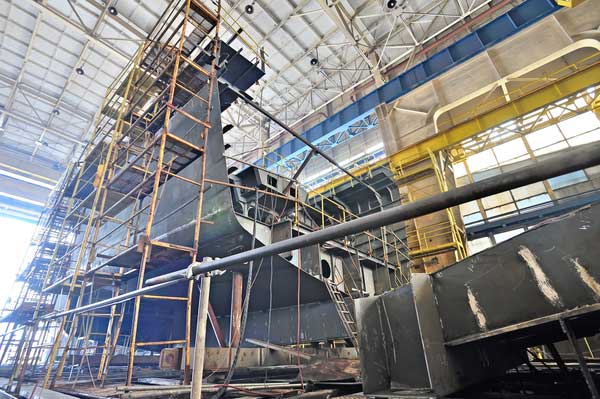China has claimed the top position globally in shipbuilding, securing over 80% of new ship orders in September 2022. This is a remarkable accomplishment for China’s shipbuilding industry after years of effort, and signifies the shift of global manufacturing leadership towards China.
In contrast, South Korea received only 6.5% of global ship orders in September, taking second place. South Korean media has highlighted that China’s rapid expansion in shipbuilding has for the first time pushed South Korea into a secondary position. Some suggest South Korea’s President Yoon Suk-yeol should take responsibility for this leadership shift, underscoring South Korea’s concerns about losing its long-time dominant position in shipbuilding.

China Diversifies into High-End Vessel Manufacturing
China’s manufacturing prowess is evident not just in quantity but also technological innovation and market diversification. Chinese shipbuilders are no longer solely focused on traditional bulk carrier orders. Instead, they are progressively entering the market for large container ships, LNG carriers, PCTCs and other high-end vessel types. This strategic diversification enhances the resilience and competitiveness of China’s shipbuilding industry.
The challenges facing South Korea’s shipbuilding industry go beyond declining orders and include rising labor costs, increasing raw material prices and currency exchange rate fluctuations. In this scenario, South Korea has not only lost its former global leadership in ship manufacturing but likely faces even more difficulties ahead.
Global Shipbuilding Demand Enters a Replacement Cycle
Industry data reveals global ship orders in June 2022 totaled 95 vessels, a 34% year-on-year decrease. This decline is attributed to the peak in global ship orders in 2021-2022, indicating the market is entering a period of inventory digestion over the coming years.
In the limited pool of new orders, Chinese shipyards secured 80% of the global total by deadweight tonnage. South Korea ranked second globally with 14% of orders, relying heavily on Samsung. However, analysts suggest South Korea will lose its longstanding leadership position given challenges like rising costs and exchange rate fluctuations.
Cumulative global ship orders in the first half of 2022 were 678 vessels totaling 17.81 million deadweight tons, down 34% year-on-year. However, ship completions and deliveries have increased noticeably this year. Domestic shipyards in China are expected to see a peak in deliveries over the next 2-3 years, marking the start of a profit recovery cycle for shipbuilding.
China Enters a “Big Cycle” of Replacement Demand
There is consensus that China’s shipbuilding industry has entered a “big cycle” of replacement demand expected to last 5-10 years. Since early 2022, the order situation has seen significant growth with overall prosperity rising.
The cycle of ship dismantling is around 20 years, and the average age of the global fleet continues to increase since 2013, reaching 21.7 years in 2022 for ships above 100 gross tonnage. Replacement demand is imminent. With over 60% global market share of new orders and outstanding orders in early 2022, China is well positioned to benefit from this growth cycle.
Conclusion
The data and trends reveal China’s shipbuilding industry has entered a new era, injecting momentum into the rise of China’s manufacturing. With new ship orders dominating over 80% of the global market versus South Korea’s 6.5%, the gap is immense. This reflects not just the strength of Chinese firms but China’s broader dominance in the global economic landscape. The coming years will see China’s shipbuilding industry peak in deliveries and realize significant profits.
